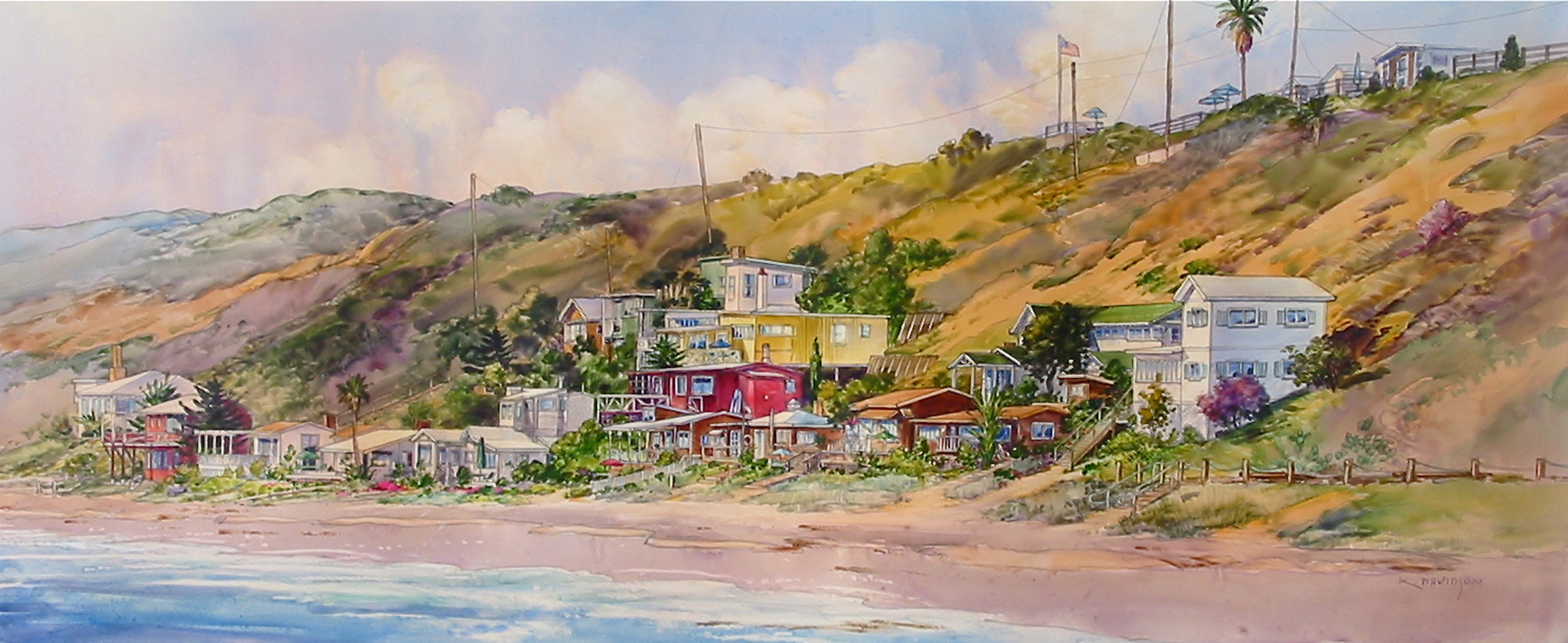One on One with Craig de Pfyffer
By Gina Dostler
Time flies like an arrow straight and true, with change as the only evidence to its passing. Change is the silent partner of time. It’s such a subtle manifestation that for the most part it goes unseen in our day-to-day life, only to become apparent when a favorite restaurant gone seemingly overnight has actually been gone for weeks.
And as we hear more and more about taking care of Mother Earth with sustainability and going green, it is change that is breaking the ground in the environment around us, challenging ourselves to take part in this growing awareness so we can create a better world for our children is at the forefront of life at home. Environmentally, so much can be done with modifications to how the household is run, with things like energy-saving appliances and smart controls managing for optimum energy usage.
Yet right outside the front door of every home the perfect way to contribute to our environment is just waiting to be dug up. Craig de Pfyffer, a landscape designer soon to be landscape architect, understands the need to bring our region into an environmentally happy place for all. And it doesn’t mean compromising looks. It just means finding a comparable method to get the same effect, in an environmentally sound way. His love of native plants since his early childhood days of running around Laguna Beach brought him full circle to designing landscapes in the very city he was born.
I asked him what was trending now in planting for fall and his quick response was native plants. And right now is the perfect time to introduce these natural habitats to any landscape. Thrilled to be learning more about creating a natural environment that contributes to a better world, I listened to his great ideas for planting this fall and his plans for the future in bringing native plants to every home.
Q: What brought you into the world of landscape design?
A: My father grew up in the Yosemite Valley and really had a love of nature. He’d take us hiking up in the Sierras where my connection to nature took root. At home, in Laguna both my parents gardened so of course I grew up digging in the dirt with them. This city is really a special place to grow up. We would play outside where our backyard was the hills and our front yard the beach. Nature and the outdoors played heavily in my life so it was a natural step when I chose to study environmental designs with landscaping and architecture rolled into the mix.
Q: How do plants play into conservation?
A: With our local climate we can grow most anything here. We pipe in water and grow tropicals that burst the landscape with vibrant colors for a beautiful Mediterranean look. You’ll find amazing gardens growing everywhere. Unfortunately we must be very prudent with our water usage since it comes from far distances and not from local rainfall. Water is becoming more and more of an issue with shortages driving higher prices. The alternative is to use native plants.
Q: You are doing some amazing work with the city of Laguna Beach to create bioswales that utilize native plants. What is that?
A: Bioswales is a term used where the water flows through a lower depression in the land to filter out all the sediments and particulates to clean the water before it goes into the local waters. I have the opportunity to work with Larry Steinle of LA Studio on the new lifeguard headquarters, having worked with Larry the past twelve years. The existing restrooms are being removed and the bluff restored with native plants. On the lifeguard headquarters below the bluffs we are putting in a green roof. These flat roofs will be planted with sedums, a hardy low growing succulent. The concept behind the green roof is to collect the rain water, filter it through the soil and roots and slowly release it back into the landscape, thus reducing runoff from the storm water. This is just another way to help sustain our environment.
Q: You mentioned this time of year is perfect to establish native plants. Why is that?
A: It’s the perfect time to plant natives because the heat of the summer is passing and this allows the plants to use the fall season to set their roots. When the winter rain comes it helps drive the roots deeper and establishes the plants. The harsh heat of summer makes it difficult for these plants to settle whereas the fall and winter months are a friendlier environment for them.
Q: Are there native plants that compliment the cottage style found in the Newport area?
A: Believe it or not there is. The cottage landscape blooms with beautiful colors of mostly tropical plants. Why not use natives where there is a palette that also blooms all year round? For instance California Monkey flowers or a native variety of fuschias bring beautiful colors to any landscape and hummingbirds love to flit here and there enjoying the nectar these plants provide.
Q: What about the more formal landscapes?
A: The more formal landscapes with manicured edges can also be created with local plants. I know its difficult for the idea of replacing lawns with natives is difficult. Maybe start by reducing the lawn area and fill it with beautiful native perennials. For those with a preference for clipped hedges these too can be replaced with more water conserving natives that take to pruning such as Prunus lyonii or more commonly known as Catalina Cherry.
Q: What do you have in the works to bring more native landscaping to the Newport area?
A: I’m currently working with Tree of Life Nursery off of Ortega Highway to develop a palette for formal planting and landscape stock that can replace the imported Mediterranean plants. As a designer I’m looking at the creative aspect and how to take native plants and introduce them into the Newport design vernacular so the same Mediterranean feel or formal garden qualities can be preserved. The problem is you can’t just take one or two types of native plants and place them here and there. There needs to be a mixed community of these plants so the natural interaction they’ve adapted in the soil with each other can take place. As a landscape architect I’m coming up with the solution to put together these packages and replace the current landscape with the same type of look but with groups of natives instead, all based on soil and sun exposure that includes instructions for the gardener to follow.
Q: You’re take on the whole environmental landscape thing?
A: I see landscapes as a painting with the potential for very pleasing and visual effects all brought about with broad brushstrokes in drifts of color and textures to bring in the beauty of native perennials. It’s a work in progress, creating landscapes that represent the environment in its natural form. But it’s something I’m very excited in doing. One thing about working with the environment, there are always new things to learn and I love that.
CONTACT INFORMATION
Craig de Pfyffer, ISA, ASLA Associate
Environmental Designs
1278 Glenneyre Street #196
Laguna Beach, Ca 92651
Tel: 800.811.3010
Fax: 800.811.3014
Mobile: 949.288.3010
ISA Certification: WE-6533A






